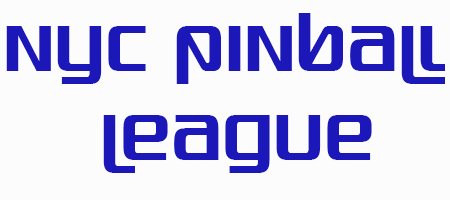Why Teams Secretly Abandon That New Software
The screen glowed with the familiar, slightly pixelated lines of a graph. Not bad, for something churned out by ‘Project Synergy,’ the shiny, $2.3 million investment we were all meant to be embracing. My colleague, Maya, didn’t seem to embrace it so much as tolerate it. I watched her, transfixed, as her mouse hovered, clicked, dragged a selection box, and then hit `Ctrl+C`. A moment later, she tabbed over to PowerPoint, `Ctrl+V`. The same chart, now residing in a presentation that would be emailed out, bypassing Synergy’s collaborative dashboard entirely. The irony wasn’t just palpable; it was a physical sensation, like a dull ache behind my eyes. Project Synergy, designed to streamline, had just added three steps to a process that used to be one: open spreadsheet, copy, paste. Now it was: open Synergy, navigate, screenshot, paste to PowerPoint, email. A quiet, almost imperceptible rebellion, playing out right there in front of me.
We poured a staggering sum into this “transformative” platform. Yet, here we are, six months deep into its mandated adoption, and if you peeked behind the curtain, you’d find an entire department still clinging to their meticulously crafted spreadsheets. Management, bless their hearts, would hold meetings where they’d frown, talk about “resistance to change,” and brainstorm new “engagement initiatives.” They saw stubbornness. I saw something else entirely.
This isn’t about Luddites clinging to the past. This is about people who are, fundamentally, masters of their own efficiency. They don’t abandon new tools because they’re afraid of progress; they abandon them because the old way, however clunky or seemingly outdated, is still faster, more intuitive, or simply less friction-filled than the pristine, perfect ‘solution’ that’s been imposed upon them. It’s a quiet protest, a collective sigh of frustration that manifests as a return to the path of least resistance. But why does this always seem to catch us by surprise?
The Empathy Gap
This isn’t a technology failure, not in the traditional sense of buggy code or crashing servers. This is a failure of empathy. It’s a fundamental, glaring disconnect between the people who sign the checks and choose the software-the executives with their strategic visions and quarterly reports-and the people who have to live inside that software, day in and day out, to actually get their jobs done. The boardroom’s elegant solution often becomes the cubicle’s complex problem.
I recall a moment, trying to remember what I’d just walked into the room for, the thought slipping away like water through my fingers. It struck me then that we often treat software implementation the same way-we forget the essential user journey, the actual *purpose* of the tool from the perspective of the person clicking the buttons. We focus on features, not feelings. We prioritize data aggregation over daily grind alleviation.
Strategic Overview
Daily Grind
Often, this empathy gap stems from an organizational silo effect, where the procurement team, focused on vendor relationships and budget lines, rarely has a truly intimate understanding of the daily operational realities of the end-user. They see the 30,000-foot view; the team member sees the 3-inch screen. This discrepancy is where the disconnect truly blossoms.
The Meme Anthropologist’s Take
Julia J., a meme anthropologist I once met at a painfully long conference on “digital transformation,” had a fascinating take on this. She argued that the adoption of any new digital tool isn’t just about utility; it’s about cultural integration. “Every new piece of software,” she’d mused, her eyes alight with a particular kind of academic mischief, “is a new dialect. If you force a new dialect on people who already have a perfectly good way of communicating, and that new dialect is more complex or less expressive for *their* specific needs, they’ll simply revert. Or they’ll create a meme about how bad it is.”
She then pulled out her phone to show me a series of darkly humorous corporate memes about ‘Project Synergy’ she’d collected, each one a testament to the quiet suffering of forced adoption. She was studying the micro-rebellions, the digital breadcrumbs of user frustration. Her hypothesis, she explained, was that these memes were not just expressions of discontent, but also a form of collective coping-a way to build solidarity around shared annoyance, a digital equivalent of a quiet grumble at the water cooler. The sheer volume and specificity of them told a story no executive dashboard or adoption rate metric ever could. Each meme was a tiny, potent package of shared experience, a collective whisper of “I feel your pain” across cubicle walls.
The Friction Factor
We make this mistake constantly: we assume our users, our colleagues, *want* what we want. We think they want the sleek interface, the comprehensive reporting, the integrated ecosystem. But what they often want is simply to get their work done with the least amount of friction. If your new, powerful, all-encompassing tool adds three clicks where there used to be one, or forces a data entry field that is irrelevant to 93% of their daily tasks, then it is not an improvement. It’s a hindrance. Why do we keep falling into this trap?
Complex Mixer
3 minutes, 23 attachments
Simple Mixer
3 minutes, 3 parts
This reminds me of a time I was trying to bake a cake, convinced I needed the latest, most complex stand mixer with 23 attachments. I spent an hour figuring out how to attach the whisk, only to realize my old, reliable hand mixer-while not as glamorous-could have done the job in three minutes, with three simple parts. The fancy mixer sat there, a testament to my misguided ambition, mostly collecting dust. It felt like a contradiction, to constantly advocate for innovation and then find myself clinging to old ways. But that’s the point, isn’t it? Innovation for innovation’s sake is a trap. True innovation solves a problem; it doesn’t create new, more elegant ones.
Flipping the Script on Change
The “resistance to change” narrative is an easy out. It lets leadership off the hook, shifting the blame to the very people they’re trying to empower. But if we flip that script, if we truly embrace the idea that employees are actually *seeking* efficiency, then the onus shifts. It forces us to ask: What problem are we *really* solving? And for whom?
Flooring Showroom vs. Home
Consider, for a moment, the traditional approach to buying something as foundational as new flooring. Historically, it’s involved driving to a showroom, sifting through samples under fluorescent lights, trying to imagine how a small square of wood or tile would look in your actual living room. It’s a cumbersome, often frustrating process.
But what if the solution wasn’t about building a bigger, flashier showroom, but about bringing the showroom to you? This is precisely the kind of user-centric thinking that some businesses excel at. Instead of making you conform to their process, they adapt to yours. They come to your home, where you can see samples in your actual lighting, next to your existing furniture, making the decision process not just easier, but profoundly more accurate and satisfying.
This approach, exemplified by services like a trusted local Flooring Contractor who understands that convenience and context are paramount, reveals a profound truth: the best solutions dissolve friction; they don’t introduce it, no matter how shiny the new interface.
This isn’t just about flooring; it’s a blueprint for any service or software seeking genuine adoption. It’s about building solutions *around* the user’s actual context and needs, rather than imposing a difficult, one-size-fits-all process. And the data supporting this approach is compelling.
The Hidden Costs of Complication
We preach transformation, yet often deliver complication. The data consistently reveals this truth. A recent internal audit, for example, showed that for every 13 people using Synergy for basic task management, 23 were still relying on a combination of email and personal spreadsheets for the bulk of their workflow.
Relying on Spreadsheets
Using Synergy
The cost of this shadow IT, this unacknowledged dual system, isn’t just the $2.3 million spent on the primary tool; it’s the untold hours lost to double-entry, data discrepancies, and the mental load of maintaining two parallel systems. It’s a hidden tax on productivity, likely adding another $373 per employee per year in wasted effort, not to mention the emotional toll of constant low-level frustration. Imagine 23 employees doing this daily, year after year. The cumulative drain is staggering, far exceeding the initially estimated savings that justified the software purchase. Or maybe it was $43.3-the precise figures often get muddled in the fog of operational reality, but the principle of significant, unmeasured loss remains firm.
Whispers of Discontent
Sometimes, I just sit and observe. The quiet taps of a keyboard, the frustrated sighs. I’ve seen seasoned project managers, individuals capable of orchestrating complex international initiatives, stumble over a calendar invite in Project Synergy, ultimately defaulting to Outlook because it was just… less of a fight. They didn’t voice their frustration loudly, but their actions screamed it. The vague whispers of discontent in the breakroom about “another new thing” or “just trying to get my 3,000 tasks done” speak volumes.
And then there are the rare, detailed conversations, like the one I had with our lead designer, who painstakingly walked me through the 23 extra clicks required to submit a simple creative brief through Synergy, compared to the 3 clicks of the old system. The difference wasn’t negligible; it was an existential threat to her daily schedule. How can we ignore these signals?
The Pattern of Abandonment
We keep buying these silver bullets, these all-in-one solutions, convinced they’ll magically align everyone. But people aren’t widgets to be aligned; they’re individuals with established habits and a finite amount of cognitive energy. When you introduce friction, you introduce resistance. When you introduce complexity, you introduce abandonment. The pattern is clear: if the perceived effort to use the new system outweighs the perceived benefit, people will revert. They will find their way back to the familiar, the efficient, the less arduous path. It doesn’t matter how many features your software boasts if it doesn’t intuitively serve the actual job-to-be-done. It is about understanding the human element at every single click and scroll.
The Path Forward
Perhaps the real “transformation” isn’t in finding the perfect piece of software, but in truly understanding the people who have to use it. Maybe it’s about listening, observing, and then building something that genuinely makes their lives easier, not just a dashboard prettier for the executives. The path forward isn’t in more mandatory training sessions or stern memos.
It’s in recognizing that every screenshot, every reverted spreadsheet, every muttered complaint is a data point. It’s a plea for clarity, for simplicity, for solutions that respect the intelligence and the efficiency of the human being on the other side of the screen. What if, for a moment, we stopped blaming “resistance to change” and started examining the change itself, from the perspective of the people who actually have to live with it?
Focus Shift
93%



